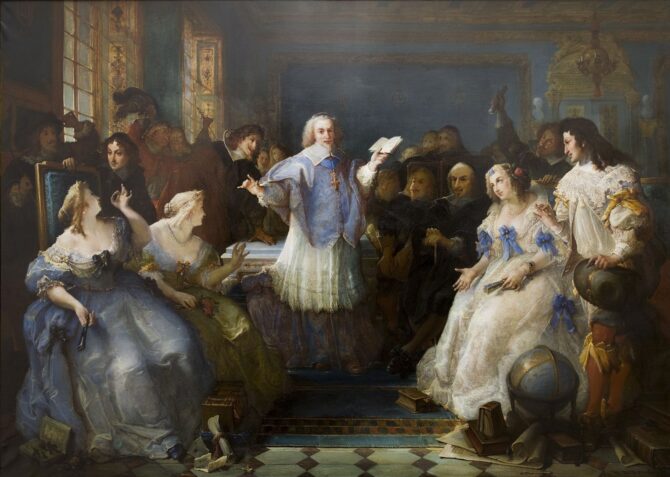The Smart Side of Paris: The Blue Room
This past summer, I stopped by a kiosk near the Saint-Mandé metro and picked up a copy of philosophie magazine, handed it to the gentleman attending the counter and asked, “How much does this cost?” (in French, of course). I was met with an icy stare and folded arms. I knew immediately why I was being silently chastised. “Bonjour, monsieur,” I said. He smiled and returned the greeting and we carried on with business. I had forgotten the cardinal rule of French socialization: politesse, which always begins with “bonjour.”
The magazine’s cover carried a walking, talking mouth, not unlike the famous Rolling Stones logo, but with less tongue. Its theme that month was “Il faut qu’on parle!”: We have to talk. The edition is a tribute to the lengthy and admirable tradition of respectful dialogue encapsulated in the longstanding French conversational ritual of testing both sides of an issue, lovingly known as “le pour et le contre”: the pro and the con. The magazine opens with a cartoon about police brutality (yes, the French can even poke fun at that). A protestor with a sign reading “Stop police brutality” is being assaulted, only to learn that his real crime is that he fails to write “s’il vous plait” on his sign.
The magazine is filled with a spirit of “le pour et le contre” as philosophers from Locke and Hobbes to Habermas to Nietzsche are placed side by side, psychoanalysts offer their opinion, everyday people chime in about the necessity of calm and politeness in the face of tension, and two renowned academics debate in print the hot button topic of “le wokisme.” And yes, the professors’ debate ends with a cordial and mutual nod toward the viability of the other’s position.

Where does this deep, deep cultural habit come from? Why are there dozens of children’s books available that teach politesse? Why did the great French philosopher Henri Bergson, whose works carry heavy philosophical titles such as Time and Free Will, Matter and Memory, and Creative Evolution, write a book titled La Politesse? And what does politesse have to do with the French insistence on digging into “le pour et le contre” of every topic, controversial and quotidian?
The answer emerges from some centuries ago in a private mansion — destroyed in the 19th century — that sat where the Louvre’s Pavillon Turgot now sits (the west wing of the Richelieu portion). In that mansion lived a most remarkable woman: Catherine de Vivonne, the marquise de Rambouillet. Sometime around 1620, Catherine grew bored with the mandatory appearances, pretentiousness, and dissimulation of court life. Retreating to private life, yet longing for social connection, she was suddenly struck with the idea of recrafting her house, imagining a space designed to bring people together and facilitate conversation. She decided upon high, wide windows allowing for ample views of nature; she had stairways moved to the sides of rooms to create more open spaces; and, most importantly, the conversational space was to center around what was quickly dubbed “The Blue Room.”
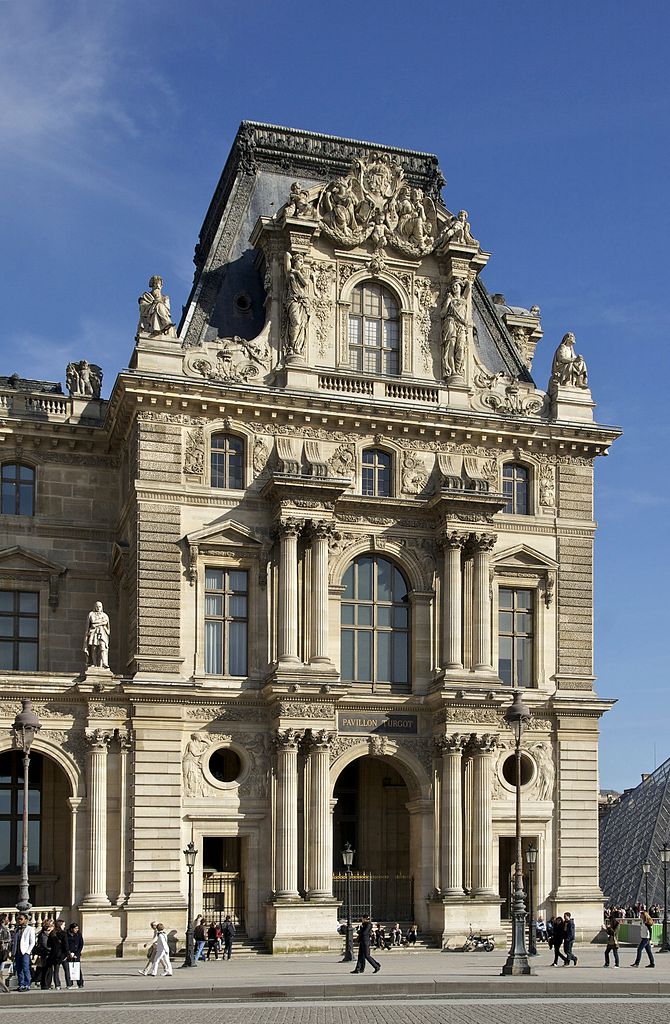
Pavillon Turgot, Louvre Museum. Photo credit: Jebulon/ Wikimedia commons
The Blue Room broke decorating tradition by not adopting the ubiquitous reds and tans of other mansions. Visitors described the Blue Room as “an enchanted place” decorated with baskets of flowers and scented with potpourri; invitees expressed “surprise and disorientation” upon entering; the queen (Catherine’s cousin) sent architects to copy the style. The sensory impact was beyond anything imagined as some described her home as “the most celebrated in the kingdom.”
But the marquise’s home soon became famous for much more than its innovative architecture and color. It was about to shape French social dynamics and culture for centuries.
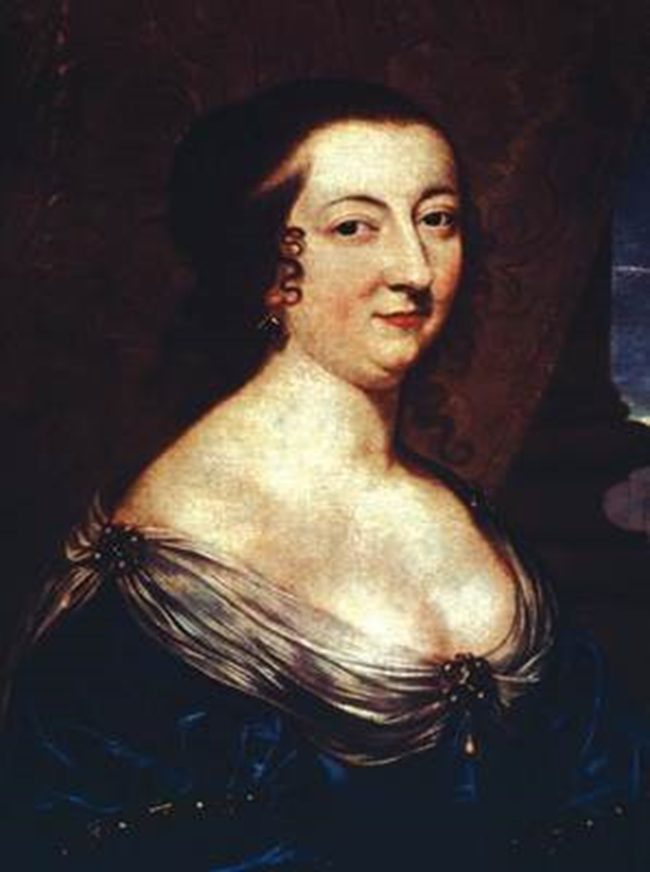
Portrait of Mme de Rambouillet. Oil on canvas, House of the Dukes of Uzès. Anonymous/ Wikimedia Commons
Catherine invited guests from different walks of life to discuss a variety of topics, insisting that all participants treat each other with a refined respect that came to be called “politesse.” This mutually respectful mode of conversation leveled social distinctions of rank and created a space where ideas mattered most. Poets, priests, and princesses gathered at the Hôtel de Rambouillet to experience the beginnings of a “cultural revolution.” Her guests discussed novels, presented poetry, played games, performed theater, and executed practical jokes. Freedom of expression was the rule, decorum was the guide, and politesse was the reigning language. Here, people could disagree without concern for rank or custom; unlike life at the king’s court, they gathered not to win favor, but to be who they were.
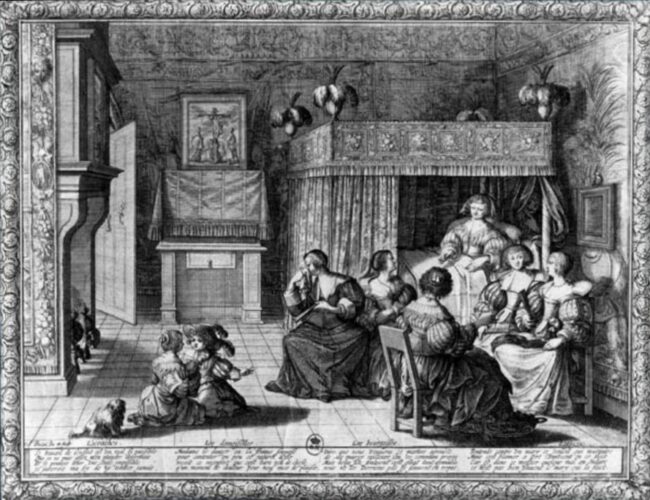
Engraving of Marquise de Rambouillet’s Chambre Bleue by Abraham Bosse. Wikimedia Commons
Her regular meetings that we now call “salons” inspired imitators in Paris who also insisted that traditional hierarchies of wealth, social status, and gender be set aside as attendees explored le pour et le contre of one another’s ideas. The polite, sophisticated conversation practiced in the salons slowly spread to Parisian society at large as a behavioral norm that defined cultural belonging.
Nowhere is this sense of cultural belonging better represented than in the unusual figure of Vincent Voiture. Voiture was an otherwise average citizen who was invited to the Hôtel de Rambouillet because of a friendship he had formed with one of its habitués. Almost at once, Voiture’s conversational skills enchanted the salon; and he proved equally adept at captivating its audience with verse and prose. His playful repartee bounced between flirtatiousness, indifference, subtlety, profundity, and self-effacing foolishness. He composed ditties, wrote elaborate letters fused with teasing satire, and created parodies that his audience adored.
Thanks to this unique conversational atmosphere, Voiture could write of himself, “he who is born a plebeian can be reborn as a gentleman and flood his life with light, despite his obscure beginning.”

Painting of Vincent Voiture by Philippe de Champaigne. Public domain
Voiture published nothing. Among what we have of his short writings, nothing even remotely resembles the pedantic scholarship for which Parisian intellectuals of the age were famous. His language, learned and refined at the Hôtel de Rambouillet, was above all natural — so much so that 50 years later a Jesuit intellectual said that “Voiture had taught the French to write with ‘naturalness’.”
But it wasn’t exactly Voiture who helped refine the French language so much as the woman he adored: Catherine de Vivonne’s daughter, Julie. At precisely the height of the fame and influence of Catherine de Vivonne’s salon, the French government under Cardinal Richelieu was standardizing the French language, which was splintered into dozens of dialects and pronunciations. In fact, “the Académie française was established in 1635 as a way to maintain the standards decided upon and to be the final judge of whether a term, structure, or pronunciation fit those standards.”
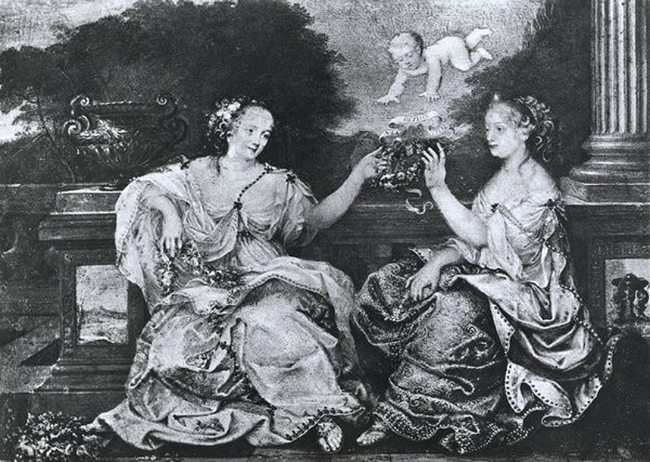
Rambouillet, Catherine de Vivonne, marquise de (1588-1665). French noblewoman, owner of a famous literary café in Paris. Madame de Rambouillet and her daughter Julie d’Angennes, Photo: Wikimedia Commons
And when the academics couldn’t stop fighting about what should be considered “proper” French, they turned to the language of the salons. In fact, when the grammarian and linguist Vaugelas was writing his Remarks on the French language… for those who wish to speak properly, he turned to Julie for guidance on speaking perfectly since “her authority in the matter was considered indisputable.”
And thus were the three pillars of French high culture — politesse, proper French, and mutual respect for conflicting opinions — melded in the crucible of conversation born in the marquise de Rambouillet’s Blue Room. Here, where de Vivonne created an environment that taught “the art of good manners and the religion of taste,” aspirations of social advance could be made reality by mastering — or at least attempting to master — the three languages of the salons: politesse, “pure” French, and le pour et le contre. Eventually, as Benedetta Craveri writes, “the marquise’s utopian wager [became] that of an entire society.”
Lead photo credit : A reading at the Hôtel de Rambouillet, painting by Fr. Debon (1863)
More in Catherine de Vivonne, history, Hôtel de Rambouillet, Paris salons, The smart side of Paris, Vincent Voiture
